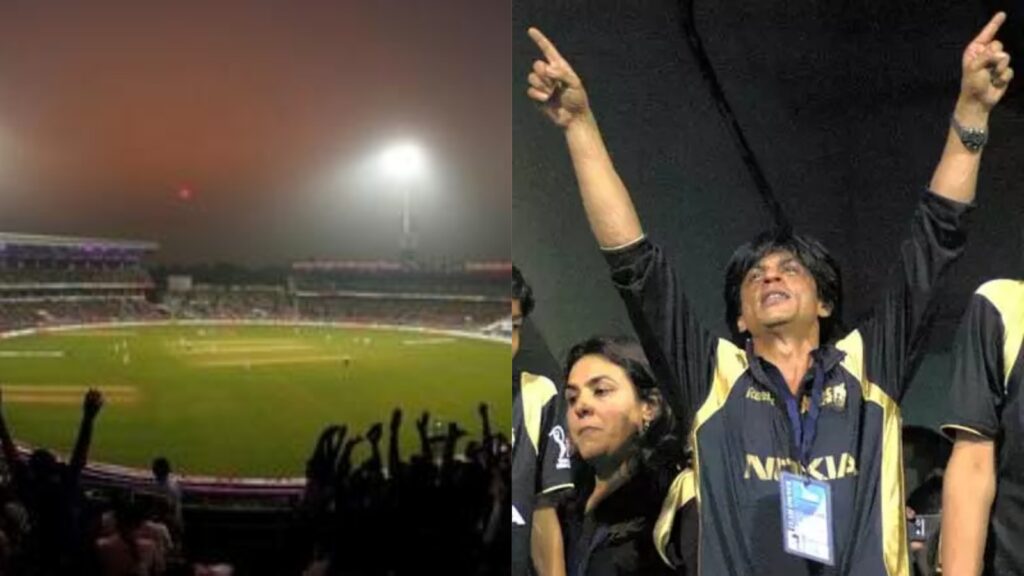
If you listened to Lalit Modi, you would have thought the Indian Premier League (IPL) was bigger than football’s World Cup final, the Olympics, and the Super Bowl put together. Modi was almost evangelical when talking about his creation, but back in 2008, there were still plenty of sceptics, even within the cricket board.
The IPL had started its journey with a bang, as Brendon McCullum’s cavalier 158 opened eyes and quickened heartbeats on the opening night. Elsewhere, Shane Warne’s showmanship and matchless cricket nous were scripting a remarkable story in Jaipur, where the Rajasthan Royals – considered the weakest team in most pre-tournament predictions – were setting the early pace.
But there were also rumblings of disquiet. Royal Challengers Bangalore and Kolkata Knight Riders (KKR), two of the most high-profile teams who had played that opening game, were doing poorly. Vijay Mallya, then Bangalore team owner, was already ranting about how his think tank had chosen a Test side, and not one geared for the hustle of Twenty20 cricket. KKR were attracting huge crowds with Shah Rukh Khan, one of their owners, in attendance for most matches, but results on the field were patchy.
Despite the intense summer heat, the crowds thronged the venues. But whether the league culture would take root was still a question that no one had an answer for. To this day, Indian fandom tends to be fairly personality-driven, as evidenced by the rapturous reception MS Dhoni gets wherever he goes. But in 2008, doubts remained whether fans would get behind franchise sides as they did the national team.
Those who played Kerry Packer’s World Series Cricket in the 1970s speak of an evening when the big boss convinced one of his assistants to ‘stop the clock’ at the ground, so that the match could finish before the 10 pm deadline that had been set by the local authorities. For them, that was the moment the penny dropped, when it became clear that cricket in coloured clothes and under lights was going to be the way forward.
How Bazball Helped Launch the IPL
For the IPL, that stop-clock moment came at the Eden Gardens on Rabindra Jayanti (May 8) in 2008. It was hot, humid and overcast, and anyone who got to the ground before the start of play knew that seasonal rain would likely play a part later on. Sourav Ganguly and Rahul Dravid, brothers in arms for so long with the Indian team, were at the helm of ships that seemed to be going nowhere, and the scrutiny – from media, fans, and team owners – was intense.
When the showers came and went, brief but intense, there was a desperation to get things started as soon as possible. Prasun Mukherjee, a former Commissioner of Police who was president of the Cricket Association of Bengal (CAB) at the time, personally led the efforts to remove water from the covers and then take them off the playing area without any spillage.
The game itself was nothing like McCullum’s pyrotechnics three weeks earlier. Ganguly’s 22-ball 20 made for depressing viewing, and there was even the odd groan of frustration from the stands. KKR eventually finished with 129 from their 16 overs, thanks in the main to a cute little blitz from David Hussey.
But Ganguly had spent an entire career proving the doubters wrong. And in conditions that seemed ideal for his brand of medium-pace bowling, he brought himself on as early as the sixth over. With the ball hooping around and occasionally stopping in the pitch, Dravid and Mark Boucher struggled to get him away.
Just five came from his first two overs, and the pressure was mounting. But it was the first ball of the tenth over that really took the roof off the famous old venue. With conventional strokes not working, Dravid tried the lap sweep. The timing was awry, and he turned back to see the leg stump flattened. Ganguly tore across the ground celebrating, and the roar from the stands was deafening.
Despite Boucher’s best efforts, and a cameo from Cameron White, it was long past midnight by the time KKR clinched a five-run victory. Hardly any of the fans, who had started packing in at 5 pm or even earlier, had abandoned their seats. Shah Rukh Khan had recited Tagore, their beloved Dada had bowled three overs for just seven and knocked over his counterpart, and all was well with the world again.
Even at 1:30 am, when journalists left the ground after filing their copies, there were thousands on the streets, patiently walking home. There was no public transport, and many faced the prospect of long treks back. But there was no sullenness or anger in the air. Instead, what they had witness inside Eden Gardens had created a carnival sort of atmosphere. Most were too tired to sing or dance, but the long procession wound its way home along different paths with smiles on their faces.
That night told many of the sceptics that the IPL was here to stay. It’s even bigger, and possibly better, now, but the fan loyalty that has made it possible was first glimpsed back in 2008. Rain or shine, the Knights kept marching on.